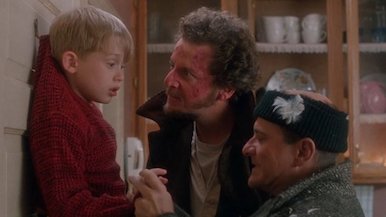The Number One Movie in America: Home Alone
By Sean Collier
December 23, 2020
BoxOfficeProphets.com

You certainly know that the 1990 family favorite was massively popular — ubiquitous during that holiday season. If you’re old enough, you remember that everyone was seeing it, children and adults alike (and children wanted to see it multiple times). You probably remember that the hurried sequel was a hit just two years later — and that the two films combined to sell a staggering amount of merchandise.
If you’re a certain age, you were very excited to get the TalkBoy voice recorder, featured in Home Alone 2, under the tree in 1992.
But looking back at the box-office domination of Home Alone reveals an almost inconceivable run. The film was released Nov. 16, 1990, debuting at number one with $17 million; it was a big win, but not a blowout, as the debuting Rocky V also did well, landing in second place with $14 million.
And then Home Alone won the next 11 consecutive weekends.
A run on top of that length is almost unheard of. In the modern era, it has only happened four times: Beverly Hills Cop and Tootsie made it to 13 weeks in the mid-’80s, but nothing would come close again until Home Alone’s 12-week run. The next long reign would be Titanic — and for all the hype around that film’s, well, titanic reign, it only held the top spot three weeks longer than Home Alone.
Chart-topping runs are simply not that long; nothing has even come close in the 22 years since Titanic. Most films are happy to remain in the top 10 for more than two months, let alone at the top spot. (Home Alone, by the way, was in the top 10 for 25 weeks.)
Admittedly, it was perhaps not the most packed holiday season. Home Alone had some competition, from the likes of Kindergarten Cop, White Fang, Three Men and a Little Lady, Predator 2, Misery and The Rookie, but none of those are the sort of film that can dethrone a giant. If, say, a Beauty and the Beast or a Die Hard 2 had been released in the midst of Home Alone’s run, it likely wouldn’t have had such a long streak.
But it’s not as though no one was going. Home Alone also broke a record set by E.T. by logging nine separate weekends with a box-office take above $10 million.
As a point of comparison, Avengers: Endgame only had six such weekends.
In short, Home Alone was what everyone wanted to see in the winter of 1990 and early months of 1991, and it seems that nearly everyone went. It’s the relatively rare (for the era, anyway) successful example of a family movie that was actually for the whole family. As long as your kids were old enough to not be terrified by the grievous bodily harm dealt to the Wet Bandits, it’s the kind of slapstick, cartoon-ish caper that makes pre-teen kids fall into the aisles with laughter.
Meanwhile, the brilliant pairing of Daniel Stern and Joe Pesci — who would win an Oscar the same year for Goodfellas — is more than worth the price of admission for grown-ups. The two are pitch-perfect, and genuinely hilarious, as the Wet Bandits.
As if all that weren’t enough, there’s sincere sentiment to Home Alone. Try not to weep when the old man is reunited with his son and granddaughter.
There are plenty of holiday films that get yearly spins simply because they’re Christmas-soaked. Home Alone, like such disparate films as It’s a Wonderful Life and National Lampoon’s Christmas Vacation, makes it into the yuletide canon because it’s very good.
And, I suppose, because everyone has clear memories of it. To look at the numbers, it’s all anybody went to see for four months.
“Home Alone” is the subject of the latest episode of The Number One Movie in America, a look back at past box-office champions. Each episode’s film is drawn at random from a list of every number-one movie since 1977. Please listen and subscribe!
Next time: While both have overly elaborate death traps, I’ll admit that this guy is probably a bit more messed up than Kevin McCallister.